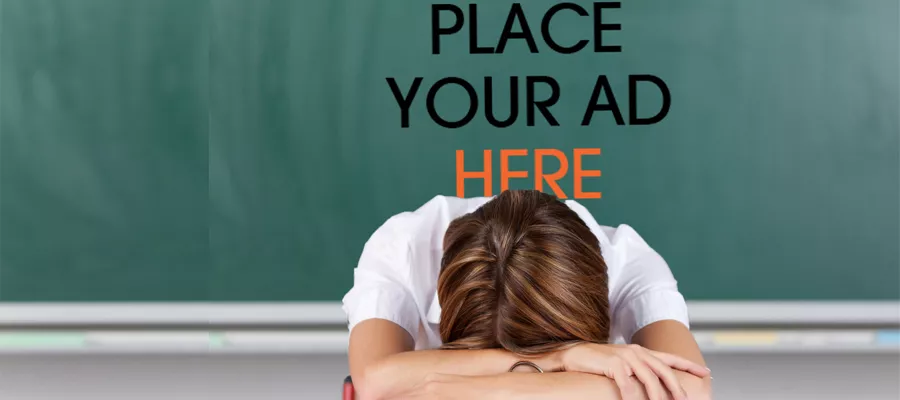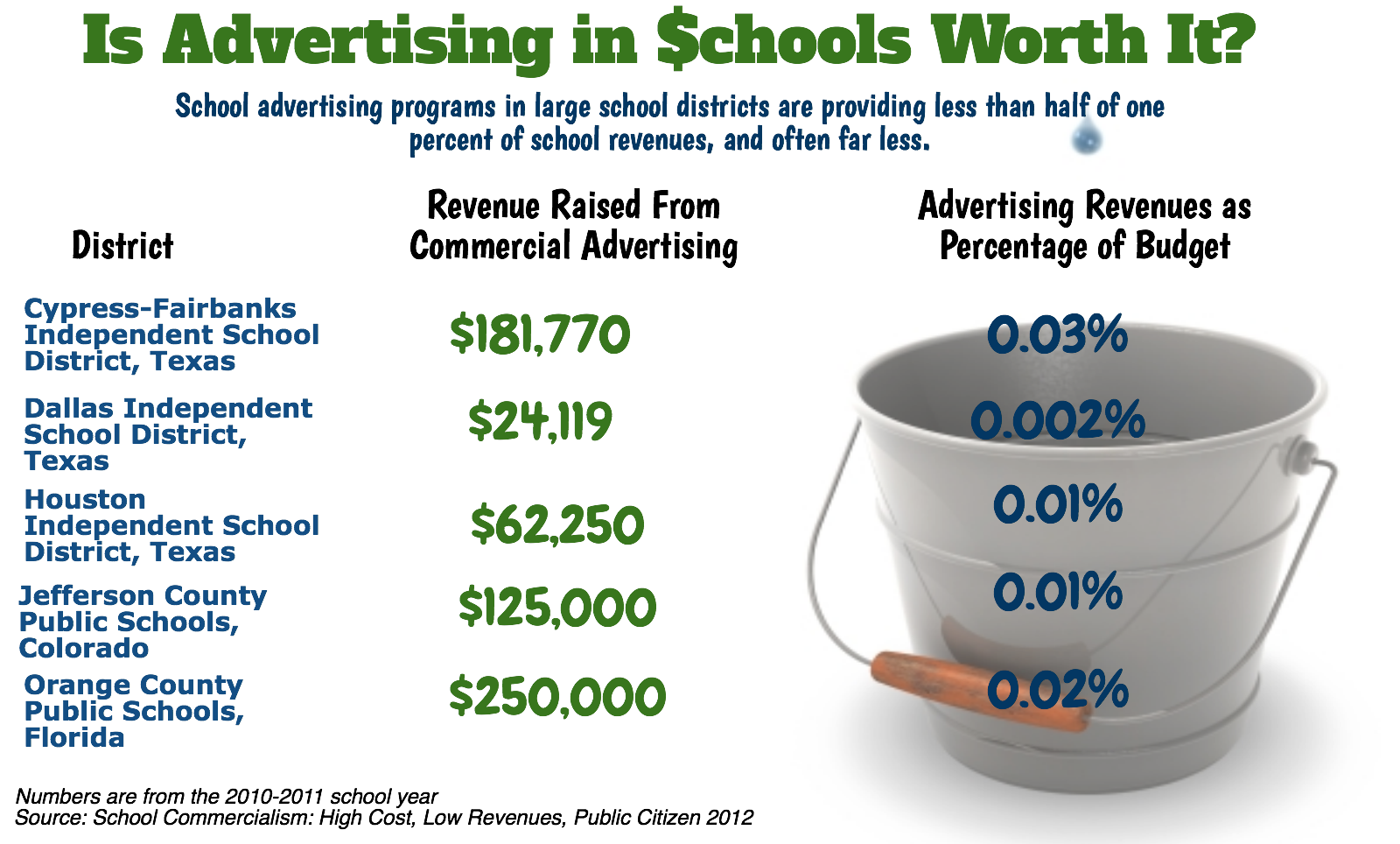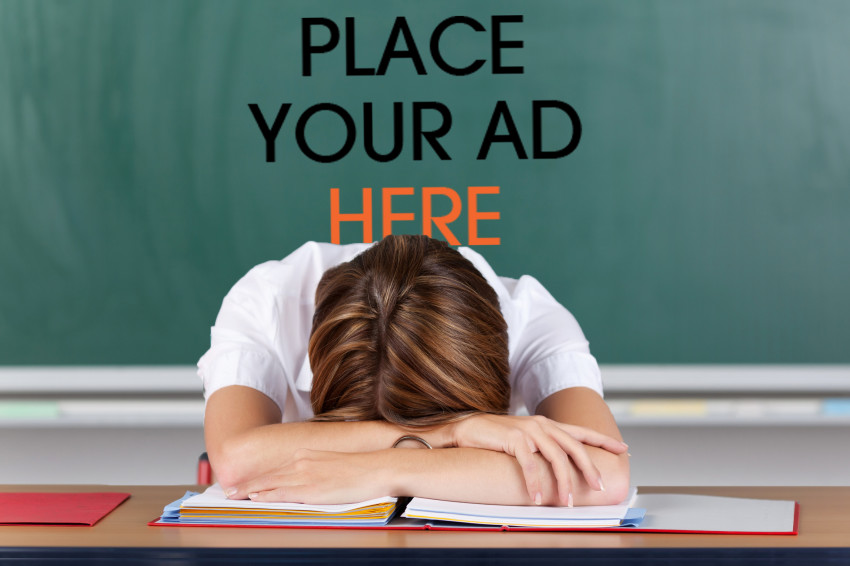 Last month, educators, parents and community members mobilized against “McTeacher Night,” an event at which educators sit behind the counter at local McDonald's franchises and serve up hamburgers, french fries and soda to their students. McDonald's bills it as a “popular and successful school fundraiser.” Teacher and parent Mark Noltner sees a blatant attempt to market fast food to children.
Last month, educators, parents and community members mobilized against “McTeacher Night,” an event at which educators sit behind the counter at local McDonald's franchises and serve up hamburgers, french fries and soda to their students. McDonald's bills it as a “popular and successful school fundraiser.” Teacher and parent Mark Noltner sees a blatant attempt to market fast food to children.
“It’s hard enough helping my daughter navigate the minefield of unhealthy marketing; the last thing she needs is her teachers hawking junk food. And as a teacher myself, it infuriates me that McDonald’s would manipulate the trust that teachers develop with their students,” said Noltner, who complained to the principal of his daughter's school and reached out to other educators to create awareness about the event.
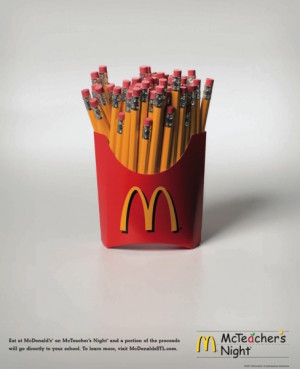 A flyer advertising McDonald's "McTeacher's Night"
A flyer advertising McDonald's "McTeacher's Night"
The National Education Association and more than 50 state and local teacher unions soon sent a letter to McDonald's CEO Steve Easterbrook, demanding an end to McTeacher's Night.
“We’re fighting a major national health crisis in childhood obesity, and schools across the nation are doing amazing work to help kids learn about healthy foods,” said Jim Bender, executive director of NEA Healthy Futures. “The practice of exploiting educators and jeopardizing children’s health for the sake of corporate profits is unconscionable."
The infiltration of public schools by corporate marketing doesn't begin or end with McTeacher's Night. Students have been exposed to commercialism in schools for decades and through a variety of methods. Product advertising adorns school hallways, lockers and buses. Teachers use corporate-sponsored materials in their classrooms. Schools enter into exclusive agreements with soda companies to sell their products on school grounds. Corporations often subsidize school events. And yet, these practices - "McTeacher Night" notwithstanding - have generally not registered so much as a blip on the public's radar screen.
“I think people tend to underestimate the risks and the downsides of these types of activities in schools," says Faith Boninger, a researcher at the University of Colorado and co-author with Alex Molnar of the new book, “Sold Out: How Marketing in Schools Threatens Student Well-being and Undermines Their Education.” "Advertising is such a big part of our culture, so people just shrug and figure, ‘Well, kids are inundated by commercials in their lives anyway, so what’s the big deal?’
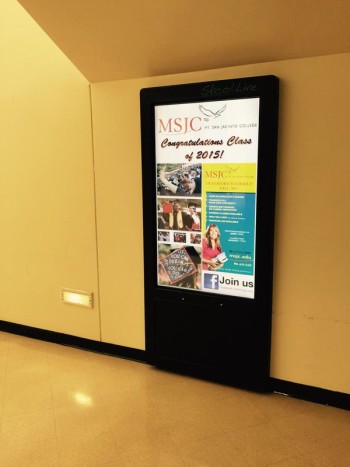 School advertising is going digital. SkoolLive produces large digital kiosks for placement in school hallways. One part of the screen keeps students updated on various school-related activities and public service announcements. The other part host ads from companies such as Subway and Nike. SkoolLIve shares some of the ad revenue with the school.
School advertising is going digital. SkoolLive produces large digital kiosks for placement in school hallways. One part of the screen keeps students updated on various school-related activities and public service announcements. The other part host ads from companies such as Subway and Nike. SkoolLIve shares some of the ad revenue with the school.
A Captive Audience
Students, like many adults, probably believe that advertising doesn't influence their attitudes and behavior. But it does, which is why corporations are more than happy to shell out billions of dollars on it annually, although exact figures are hard to pinpoint. The food and beverage industry alone spends about $2 billion annually marketing to kids.
A 2014 study by the University of Michigan and the University of Illinois found that nationwide more than 70 percent of elementary and middle school students and 90 percent of high school students were exposed to commercial messages at their schools.
Discussion about commercialism's impact on young people usually focuses on how peddling junk food on school grounds or during school activities contributes to the obesity crisis. But corporate marketing in schools can also affect what children learn.
"If you've got companies sponsoring programs, activities, and lessons in schools, you're creating an environment that doesn't encourage critical thinking about consumer choices and the impact of corporations," Boninger says.
In "Sold Out," a teacher at a school that had forged partnerships with both Nike and Target told the authors: "Some of us are trying to teach about the environment, about workers rights ... a more full and balanced perspective about what's going on on this earth. I'm afraid the kids are being brainwashed."
What makes the marketing all the more troublesome is that students are a captive audience. As the American Psychological Association noted in a 2012 issue brief on child obesity, "Children spend a considerable amount of their childhood in school settings, and because school attendance is compulsory, children have little freedom to avoid any commercial content they are exposed to in schools."
In other words, students are not able to hit an 'off' switch to avoid commercial messages, like they can at home.
And when the educator is seen actually pushing the product - as in McTeacher's Night - the student, says Josh Golin, Executive Director of the Campaign for a Commercial-Free Childhood, "doesn't stand a chance."
"We Just Need the Money"
Boninger and Molnar point to two significant developments that have led to the saturation of commercialism in schools: weaker regulatory limitations on advertising and the budget crisis that has left many school districts strapped for cash. A lot of money has left and it hasn't come back, pressuring administrators to reach out for help from eager companies in developing alternative revenue streams.
"When you look at local coverage about a corporate-sponsored fundraising event or the decision to place advertising on school grounds, you'll always hear the superintendent say, 'Well, we would rather not, but we just need the money.' And they'll talk about anticipated revenue, but they never really know what these activities will bring in," Boninger says.
As it turns out, it's no bonanza. In 2012, Public Citizen surveyed the nation’s 25 largest school districts to determine the return on their commercial programs. No program reported raising more than $250,000, the equivalent of, at best, .03 percent of the school system’s overall budget. And often, a percentage of these already paltry returns go straight into the pockets of middleman advertising sales agencies.
“At the outset, these schemes seem like a good idea to school districts, which may pay nothing up front," said the report's author, Elizabeth Ben-Ishai. "But in the end, they benefit only the agencies, while harming students and leaving school districts with little to show for their efforts."
So, marketing in schools is damaging to students and tends to fall way short of a district's revenue expectations. Why then do these practices persist?
The budget and political climate of the past few years has compelled administrators and district officials to do what they can to build goodwill with business and lawmakers. They have to prove they are doing something to generate extra revenue, even if it's only a paltry amount. And maybe - just maybe - the next advertising contract or corporate partnership will bring in more.
Marketing directly to students will continue to proliferate until lawmakers - who for the most part have been silent on this issue in recent years - take action to regulate commercial activity in schools and/or companies feel enough public pressure to rethink their strategies. Either outcome requires heightened public awareness of the threats these practices bring to students' well-being. But advertising is so embedded, says Boninger, that many parents, students, even educators don't necessarily "see" it.
"Right now, the public is kind of numb to all the corporate commercialism. So we need to begin opening up the discussion. Look what happened with McTeacher Night. Sometimes it just takes one person to see it and start asking questions."
